The Real-Life Inspirations Behind Attack on Titan’s World and Characters
Discover the real-life inspirations behind Attack on Titan! Explore the historical events, cultural influences, and mythological roots that shaped its world, characters, and story. Uncover the hidden meanings behind Hajime Isayama’s masterpiece!
ATTACK ON TITAN
Anime Fever
2/19/20257 min read
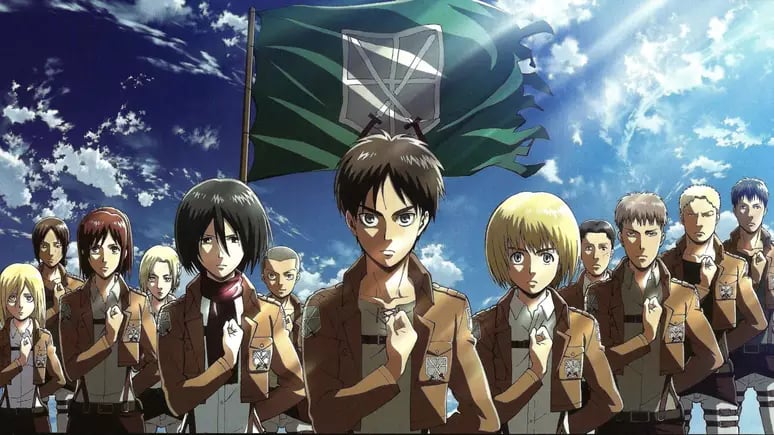

Attack on Titan (Shingeki no Kyojin) is a Japanese manga and anime series that has become a global phenomenon since its debut in 2009. Created by Hajime Isayama, the series is set in a world where humanity is on the brink of extinction due to giant humanoid creatures known as Titans. The gripping narrative, complex characters, and intense action sequences have captivated audiences worldwide, leading to a massive international fanbase. In 2022, Attack on Titan was recognized as the "Most in-demand TV series in the world 2021," becoming the first non-English language series to earn this title.
Beyond its thrilling plot, Attack on Titan draws heavily from historical events and cultural elements, enriching its storytelling with deeper layers of meaning. Isayama has incorporated influences from various periods and societies, reflecting themes such as racial discrimination and human rights violations. This article aims to delve into these inspirations, exploring how real-world history and culture have shaped the series' plot, characters, and setting, offering fans a comprehensive understanding of the underpinnings that make Attack on Titan a standout work in modern fiction.
For a visual exploration of these themes, you might find this video insightful:

Historical Inspirations Behind the Story
Attack on Titan masterfully intertwines historical events and cultural elements to create a rich and immersive narrative. One prominent influence is the Edo period of Japan, a time marked by strict social hierarchies and national isolation. This era's policies resonate with the series' portrayal of humanity confined within massive walls, reflecting a society closed off from external influences.
The Industrial Revolution also plays a significant role in shaping the world of Attack on Titan. The series showcases a society on the cusp of technological advancement, mirroring the transformative period of rapid industrialization in the 18th and 19th centuries. This is evident in the development of the Vertical Maneuvering Equipment, a technological marvel that symbolizes humanity's innovative spirit in the face of overwhelming odds.
Furthermore, the series delves into themes reminiscent of World War II and its societal divisions. The depiction of the Marleyan Empire and the subjugation of the Eldian people draw parallels to the discrimination and internment faced by various groups during the war. The narrative explores the consequences of propaganda, prejudice, and the cyclical nature of hatred, prompting viewers to reflect on the real-world implications of such divisions.
By weaving these historical threads into its storyline, Attack on Titan offers a profound commentary on the complexities of human societies, the impact of isolationist policies, and the relentless drive for progress amidst adversity.
The Setting: A World Shaped by European and Japanese History
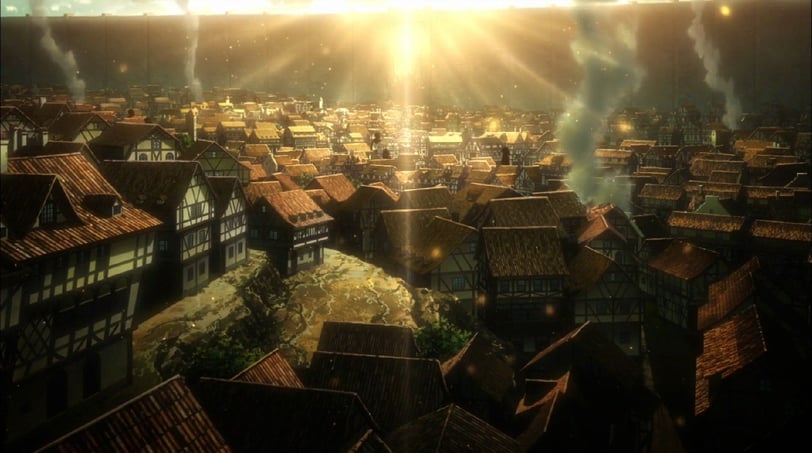

Attack on Titan features a setting deeply influenced by European and Japanese historical elements. The walled cities that protect the characters from the Titans resemble medieval European fortifications, such as Carcassonne in France and Nördlingen in Germany. These cities are known for their well-preserved walls that enclose urban centers, creating a sense of isolation and defense, much like the walls seen in the series.
The architecture within the walls of Attack on Titan also reflects Germanic and Scandinavian influences. The buildings feature steep roofs, wooden facades, and cobblestone streets, reminiscent of 18th- and 19th-century European towns. This aesthetic choice not only enhances the visual setting but also reinforces the historical atmosphere that permeates the story.
Additionally, the centralized government structure in the series resembles historical European monarchies. The presence of a royal family and a centralized capital, such as Mitras, suggests a political hierarchy similar to those found in past European kingdoms. This political organization highlights themes of power, control, and segregation, reflecting social and political dynamics observed throughout history.
Titans and Their Symbolism
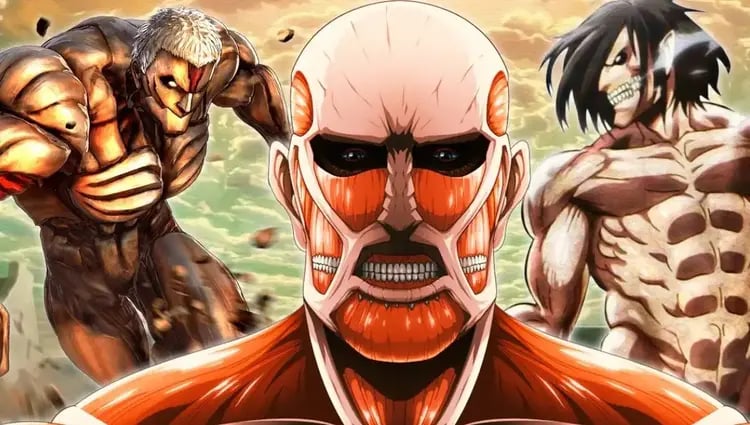

Attack on Titan's Titans are more than just monstrous antagonists; they embody deep-seated fears and draw from a rich tapestry of mythological and historical influences.
Fear of War and Destruction: The Titans can be seen as manifestations of humanity's dread of annihilation. Their relentless assaults and the existential threat they pose mirror the chaos and unpredictability of war, reflecting society's collective anxiety about large-scale devastation.
Mythological and Folklore Influences: Creator Hajime Isayama has woven elements from various mythologies into the Titans' design and lore. The very term "Titan" harks back to Greek mythology, where Titans were formidable deities challenging the Olympian gods. Additionally, the series incorporates aspects of Norse mythology, evident in the naming conventions and certain thematic elements. Japanese folklore also plays a role; the concept of colossal beings terrorizing humans can be linked to tales of giants and oni (demons) in Japanese legends.
Historical Events and Human Experimentation: The series delves into dark chapters of human history, drawing parallels to unethical scientific endeavors. The creation and transformation of Titans echo real-world events where human experimentation and eugenics were pursued, often with catastrophic consequences. These narratives serve as a cautionary tale about the perils of playing god and the moral dilemmas surrounding scientific advancement.
By intertwining these elements, Attack on Titan offers a narrative that's both thrilling and thought-provoking, prompting audiences to reflect on the deeper fears and historical contexts that shape our world.
Character Inspirations: Historical and Cultural Influences
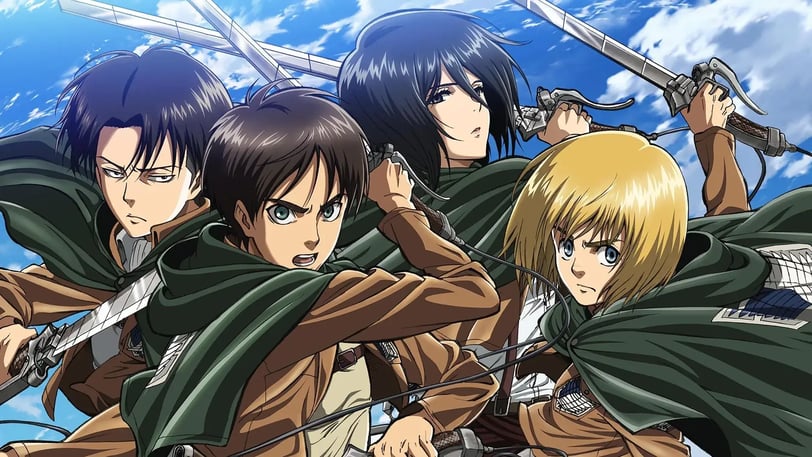

Attack on Titan's characters are intricately crafted, drawing inspiration from various historical and cultural figures.
Eren Yeager: Eren embodies the spirit of revolutionaries who challenge oppressive systems. His unwavering determination to break free from confinement mirrors the resolve of historical figures who fought against tyranny. This relentless pursuit of freedom reflects the universal struggle against oppression.
Armin Arlert: Armin's character is influenced by philosophers and military strategists. His strategic mind and emphasis on knowledge over brute force echo the teachings of thinkers who advocate for wisdom in leadership and the importance of intellect in overcoming adversity.
Levi Ackerman: Levi's exceptional combat skills and stoic demeanor draw parallels to historical warriors like Miyamoto Musashi, a renowned Japanese swordsman known for his unparalleled skill and philosophy. Levi's disciplined approach to battle and his lone-wolf persona reflect the ethos of such legendary figures.
Erwin Smith: As a commander, Erwin exhibits traits reminiscent of esteemed military leaders. His tactical brilliance and willingness to make personal sacrifices for the greater good mirror the strategies and moral dilemmas faced by real-world generals throughout history.
The Marleyan Empire and the Eldians: The dynamics between Marleyans and Eldians draw significant parallels to events from World War II, particularly the segregation and persecution experienced by marginalized groups. The Eldians' forced segregation, identification through armbands, and confinement in ghettos starkly mirror the atrocities faced by Jews and other minorities during the Holocaust. This portrayal serves as a poignant reminder of the horrors of discrimination and the devastating impact of systemic prejudice.
By weaving these historical and cultural influences into its characters, Attack on Titan offers a narrative rich in depth and realism, prompting audiences to reflect on the complexities of human nature and society.
Hajime Isayama’s Inspirations and Interviews
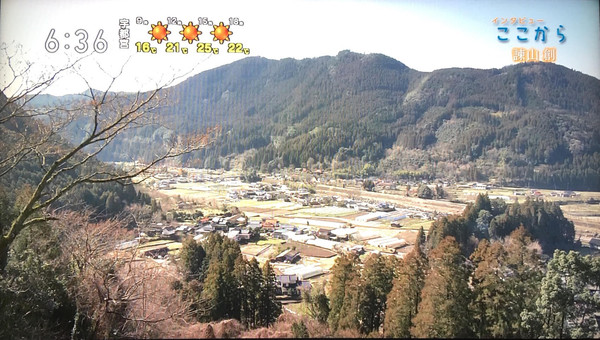

Hajime Isayama, the creator of Attack on Titan, has drawn from a diverse array of sources to craft the series' compelling world and narrative.
Personal Experiences and Hometown Influence: Isayama's upbringing in the rural town of Hita, located in Ōita Prefecture, Japan, significantly influenced the series' setting. In an interview, he described feeling a sense of entrapment due to the surrounding mountains, a sentiment that parallels the walled cities in Attack on Titan. This environment fostered themes of confinement and the yearning for freedom that are central to the story.
Literary and Cinematic Inspirations: Isayama has openly acknowledged the impact of various works on his creative process. The visual novel Muv-Luv Alternative profoundly influenced the series' apocalyptic themes and human-alien conflicts. The portrayal of humanity on the brink of extinction in the game resonated with Isayama and inspired similar existential threats in his manga. Additionally, Steven Spielberg's film Jurassic Park left a lasting impression on Isayama. The awe and terror evoked by the film's depiction of colossal creatures influenced the creation of the Titans, embodying both fascination and fear.
Contemporary Events and Societal Themes: Isayama's work also reflects real-world issues, drawing parallels to historical and modern societal conflicts. Themes such as segregation, persecution, and the impact of propaganda are explored, prompting readers to consider the consequences of discrimination and the cyclical nature of hatred.
By weaving personal experiences with diverse literary, cinematic, and real-world influences, Isayama has crafted a narrative that resonates on multiple levels, offering both thrilling storytelling and profound commentary on the human condition.
Conclusion
Attack on Titan masterfully blends historical, cultural, and literary influences to create a gripping and thought-provoking story. From its feudal and wartime inspirations to the architecture and political structures within the Walls, the series reflects real-world history in a way that feels both familiar and unique. The Titans, with their terrifying presence, symbolize fears of destruction and human conflict, while the characters draw from revolutionaries, strategists, and legendary warriors, making them feel deeply layered and compelling.
Hajime Isayama’s personal experiences, interviews, and favorite works—from Muv-Luv Alternative to The Mist—further highlight how diverse sources shape Attack on Titan’s world. Through these elements, the series resonates globally, delivering an unforgettable narrative about freedom, oppression, and survival. By intertwining fiction with reality, Attack on Titan stands as a modern classic, pushing audiences to reflect on history, society, and the human condition.
Read Also: Attack on Titan Ending Explained: What Really Happened and Why Fans Are Divided
Read Also: Eren Yeager: Hero or Villain? The Truth Behind His Evolution
Read Also: 13 Hidden Details in Attack on Titan You Definitely Missed
